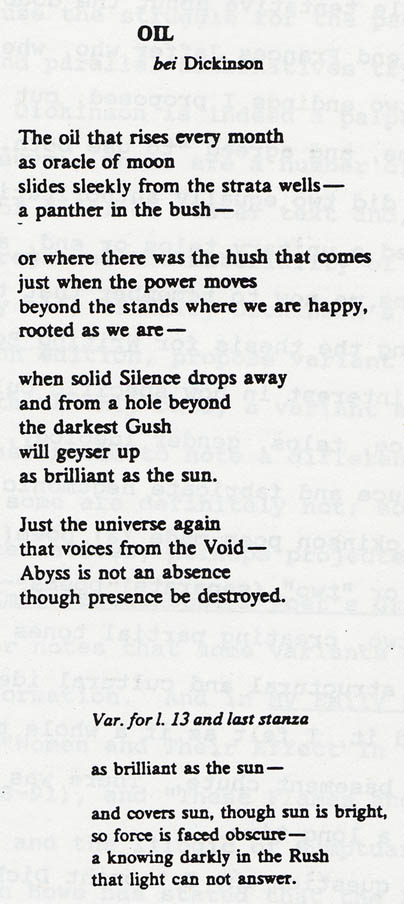
THE DARKEST GUSH: EMILY DICKINSON AND THE TEXTUAL MARK
by Rachel Blau DuPlessis
Page 1
In August and September 1978, in the final stage of a long struggle to complete and shape my first book, Wells (Montemora 1980), I wrote a poem called "Oil." It carried a dedicatory note, "bei Dickinson." The "bei"--which I meant to be Yiddish even more than German--was particularly impudent, coming from the unassimilated immigrant language of my cultural Judaism, punning on "by," as if Emily Dickinson were the author of my work, but supposedly just meaning "near" or "next to." When the poem appeared in Wells (1980), it faced a poem called "Nessie," about the Loch Ness monster, another poem about female power, this one subtitled "for Woolf."
"Oil" was meant seriously and from its inception as direct homage to Dickinson's textual practices. "Tremendous idea about 'Oil' [I recorded in my journal in September 1978]--write it in two versions! Do an 'alternative'--a second ending just like Dickinson." The "tremendousness" of the idea was not, as it turned out, just cloying or self-cheering overstatement. It was an idea with many implications that has continued to affect my work and reverberate within it.

